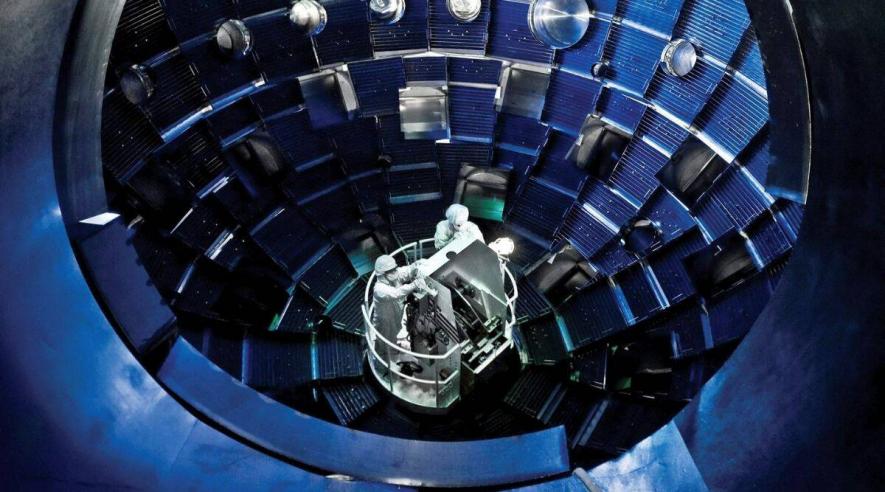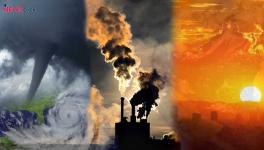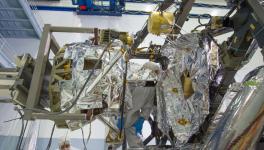Explained: Fusion Energy and US Scientists' Breakthrough

Image credit: The Indian Express
The US Department of Energy (DOE) has announced the achievement of fusion ignition – the generation of energy from a nuclear fusion reaction. This has been deemed a major scientific breakthrough. But why? Following the half-a-century-long quest for obtaining fusion energy, scientists at the National Ignition Facility of the Lawrence Livermore National Laboratory (LLNL) have been able to achieve the breakeven point in fusion energy.
The breakeven point indicates achieving more energy from fusion than the energy they put in to run the experiment. This breakthrough is also being seen as a substitute for fossil fuels in the future. Only time will say when and how it will prove to be a viable alternative source of clean energy. But right now, the technology is far away from turning into power grids, experts opine.
The LLNL scientists achieved the so-called ‘net energy gain’ on the decisive experiment carried out on December 5, according to the DOE release, where they put 2.05 megajoules (MJ) of energy to the target and in return, they obtained 3.25 MJ of energy as output. Commenting on the success, Arati Prabhakar, the president’s chief advisor for science and technology and director of the White House Office of Science and Technology Policy, said, “We have had a theoretical understanding of fusion for over a century, but the journey from knowing to doing can be long and arduous. Today’s milestone shows what we can do with perseverance.”
It is worth mentioning here that there have been other elaborate fusion experiments being conducted in other collaborative projects elsewhere as well. But they use different technologies than the US scientists did. Before going into the details, first, let’s be clear about some basics.
What is Fusion Reaction?
Nuclear fusion reactions can produce an enormous amount of energy, through which the Sun and other stars are powered. It involves the fusion of two atomic nuclei forming a single nucleus. An atomic nucleus is the centre of an atom and the dense region consisting of protons and neutrons. Electrons are negatively charged particles, while neutrons are neutral.
The fusion of atomic nuclei releases energy because the mass of the single nucleus formed has lesser mass than the individual nuclei that fuse together. In a simpler sense, the nuclei lose some mass in the process of getting fused together. The left-over mass or the mass lost during fusion becomes energy. The famous Einsteinian equation of E=mc2 explains the process, where Einstein said that part of the mass and energy can be converted into each other.
What Did US Scientists Do?
Carrying out a fusion reaction inside a laboratory involves heating of hydrogen atoms to an extreme temperature. Two types of hydrogen atoms (isotopes), normally the deuterium and the tritium, are heated to a temperature of millions of degrees Celsius and the atomic nuclei fuse together releasing helium and energy in the form of neutrons. Heating the isotopes in a confined environment and in a controlled way is the primary step of any fusion reaction carried out in laboratories.
The LLNL scientists used 192 powerful lasers to carry the fusion called inertial confinement. The lasers fired briefly into a tiny gold cylinder about a centimetre long. The walls of the gold cylinder heat up to 3 million degrees Celsius, which is possible only in stars like the Sun. This process produces X-rays and a peppercorn-sized fusion target containing hydrogen isotopes—tritium and deuterium—is placed inside the cylinder. The X-rays cause a massive implosion (where something collapses violently inward) of the fusion target and the hydrogen isotopes fuse together. A burst of energy is released in this process.
In the latest experiments, the scientists put the energy of 2.05 MJ through the lasers and they obtained 3.15 MJ as the output. Yes, the experiment produced more energy than what was put in, but this calculation does not include the energy needed to power the lasers, which is about 300 MJ. This means a huge amount of energy is needed to produce the fusion reactions, which is seen as an initial hurdle in translating the laboratory experiment to power grids.
How is the US Experiment Different?
The history of carrying out fusion experiments in laboratories can be traced back to 1950s when Soviet scientists Andrei Sakharov and Igor Tamm came out with a design proposal for a device. In their proposal, they spoke about the ‘magnetic confinement fusion’ device or the ‘tokamak’. Unlike the US experiment, tokamaks use magnetic force to bring together the atomic nuclei and fuse them.
In fact, for most of the fusion reactions being conducted in laboratories, a magnetic force is used to fuse the atomic nuclei. In the case of the US experiment, strong lasers did the job of bringing close the nuclei and fusing them.
Last year, Chinese scientists achieved a record-breaking success, when their tokamak called the EAST (Experimental Advanced Superconducting Tokamak) managed to carry the fusion reaction for 101 seconds and at an extreme temperature of about 120 million degrees Celsius. The temperature required in magnetic confinement fusion is generally around 100 million degrees Celsius and this had been attained in earlier experiments. But no experiment could ever sustain that temperature for such a long time as the Chinese experiment did.
Last year, scientists in the UK, with the largest and most powerful tokamak in the world, the Joint European Torus (JET), produced 59 MJ of energy. The fusion reaction could be sustained for a duration of five seconds. This was more than double the energy the JET could produce in 1997, which was 22 MJ.
Moreover, there is a megaproject called ITER (International Thermonuclear Experimental Reactor). ITER, under construction, is going to be the world’s largest tokamak nuclear fusion reactor. Headquartered in France, the ITER started in 2013 and has several countries working jointly. Notably, India is also a part of the ITER megaproject.
However, the major concern of all the fusion experiments is the availability of fuel for fusion, and especially tritium. For any sustained fusion reaction, we will need tritium and the question is where it will come from. Tritium is expensive, costing around $ 30,000 per gram. With a half-life of 12.3 years, tritium exists naturally in the upper atmosphere, but only in trace amounts. Nuclear reactors produce it, but in tiny amounts. The only commercial sources for tritium are the CANDU (Canada Deuterium Uranium) nuclear reactors. Reportedly, there are 19 CANDU reactors with each producing around half a kilogram of tritium each year. However, half of these CANDU reactors are going to be non-functional within this decade.
Get the latest reports & analysis with people's perspective on Protests, movements & deep analytical videos, discussions of the current affairs in your Telegram app. Subscribe to NewsClick's Telegram channel & get Real-Time updates on stories, as they get published on our website.

















